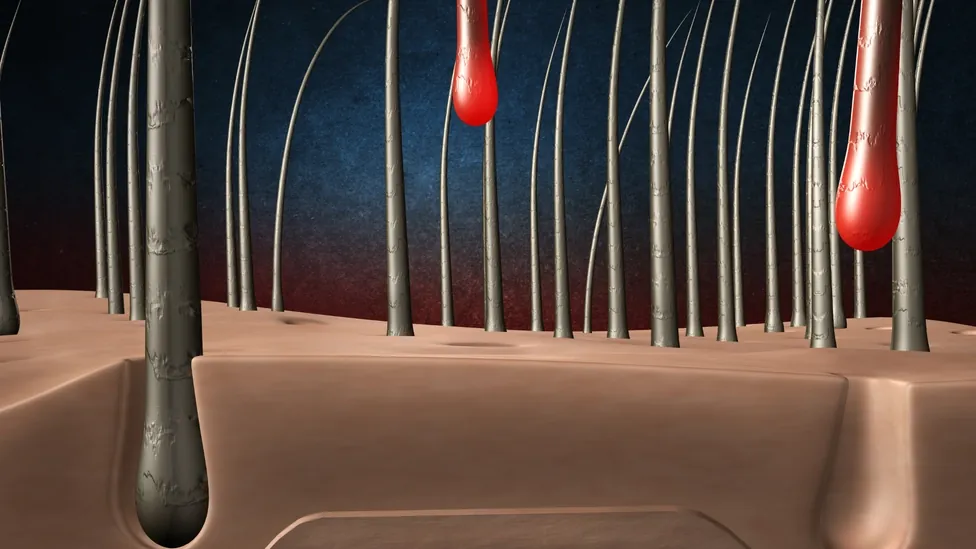Unlocking the secrets of hair regeneration: How a microRNA enhances hair growth by transforming hair follicle stem cells

Highlights
- Various factors, including genetics, hormones, nutrition, and overall health, influence hair growth.
- Hair follicle stem cells are responsible for the continuous growth and regeneration of hair throughout a person’s life.
- Researchers are exploring the potential applications of hair follicle stem cells in regenerative medicine and hair loss treatments.
- Mechanical forces in the microenvironment surrounding hair follicle stem cells play a role in follicle regeneration and hair growth.
- With age, mechanical forces weaken, leading to a decrease in hair growth.
- Cytoskeleton inflexibility in ageing hair follicles is mediated by a gene-regulated RNA called miRNA-205.
- Adding more miRNA-205 can soften hair follicles and stimulate hair growth in experimental mice, potentially offering a new approach for promoting hair growth in humans.
Our bodies have an incredible ability to heal and regenerate various tissues, including hair. Various factors, including genetics, hormones, nutrition, and overall health, influence hair growth. The health and proper functioning of hair follicles are crucial for maintaining healthy hair growth. If the hair follicles are damaged or become inactive, it can lead to hair thinning or hair loss.
Hair follicle stem cells are a type of specialised cells found within the hair follicle structure. These stem cells are responsible for the continuous growth and regeneration of hair throughout a person’s life. They have the unique ability to divide and differentiate into various cell types within the hair follicle, including cells that produce the hair shaft.
Hair follicle stem cells have attracted significant scientific interest due to their potential applications in regenerative medicine and hair loss treatments. Researchers are exploring ways to harness the regenerative capabilities of these cells to develop therapies for hair restoration and the treatment of conditions such as alopecia.
Interestingly, not just stem cells, but the microenvironment (the region around hair follicle stem cells) also controls follicle regeneration by constantly sensing and responding to signals from mechanical forces 12.
Simply put, mechanical forces in tissue that contain the hair follicles create signals for the stem cells to divide and grow more hair follicles, driving hair regeneration.
With age, these mechanical forces become weak and hair growth decreases. The reason for this has been proposed to be the stiffening of hair follicles 3. Hair follicles become stiff with age due to key cellular skeletal proteins (cytoskeleton) becoming inflexible 4.
Researchers have now discovered that cytoskeleton inflexibility in ageing hair follicles is mediated by a gene-regulating RNA called miRNA-205. It stands for microRNA number 205. microRNAs are small molecules found within cells that play a crucial role in regulating gene expression. Think of them as tiny messengers that help control various biological processes by influencing which genes are turned on or off. Despite their small size, microRNAs have a big impact on many aspects of cell function, development, and disease.
miRNA-205 regulates genes that control cytoskeleton flexibility in hair follicle stem cells. When the scientists artificially added more miRNA-205 into cells, they were able to soften the hair follicles. They genetically modified experimental mice to produce more miRNA-205 and these mice, both young and old alike, had more hair growth.
“They started to grow hair in 10 days,” said lead author of the study Rui Yi, in a press statement. “These are not new stem cells being generated. We are stimulating the existing stem cells to grow hair. A lot of times we still have stem cells, but they may not be able to generate the hair.”
He went on to add, “our study demonstrates the possibility of stimulating hair growth by regulating cell mechanics. Because of the potential to deliver microRNA by nanoparticles directly into the skin, next we will test whether topically delivered miR-205 can stimulate hair growth first in mice. If successful, we will design experiments to test whether this microRNA can promote hair growth potentially in humans.”
References
- Kyle H. Vining and David J. Mooney, Mechanical forces direct stem cell behaviour in development and regeneration. Nature Reviews Molecular Cell Biology. 18, 728-742 (2017).
- Li He et al., Mechanical regulation of stem-cell differentiation by the stretch-activated Piezo channel. Nature. 555, 103-106 (2018).
- Janis Koester et al., Niche stiffening compromises hair follicle stem cell potential during ageing by reducing bivalent promoter accessibility. Nature Cell Biology. 23, 771-781 (2021).
- Jingjing Wang et al., MicroRNA-205 promotes hair regeneration by modulating mechanical properties of hair follicle stem cells. Proceedings of the National Academy of Sciences. 120, (2023).
